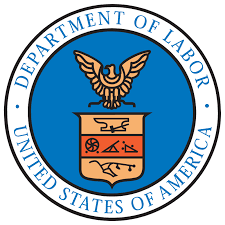
Today, the United States Department of Labor provided guidance for employers who are attempting to decipher the Families First Coronavirus Response Act. The release, titled “Families First Coronavirus Response Act; Questions and Answers,” is not a formal regulation but is intended to be “compliance assistance” for employers. Here is a link to the questions and answers: Questions and Answers. Generally, the Act requires employers to provide paid leave to employees who must miss work related to COVID-19. Here is a link to my blog post discussing the Act: Paid Leave for Coronavirus
Here are the highlights of the DOL’s Questions and Answers:
1. Effective Date: The law was signed on March 18, 2020 and provided that it would become effective in 15 days. Therefore, most lawyers thought it would be effective on April 2, 2020. DOL now says the effective date is a day earlier – April 1, 2020.
2. Joint and Integrated Employers Can Exceed 500 employees. I’ve gotten a lot of questions on how to “count” employees towards the Act’s 500-employee threshold. DOL appears to take an expansive stance for counting employees. If separate companies are considered “joint employers” under the Fair Labor Standards Act, they must each count their joint employees towards the threshold. Here’s a link to the standards for determining “joint employer” status: FLSA Joint Employer. In addition, if two entities meet the “integrated employer” test under the Family and Medical Leave Act, then all employees of the integrated employer will count towards determining coverage. Here is the link DOL provided for the “integrated employer” test (see page 9): FMLA Integrated Employer
3. Regular Overtime Counts Towards Paid Leave. If an employee regularly works overtime, then that period of time can be credited towards paid leave under the Emergency Paid Sick Leave Act. For example, if an employee is scheduled to work 50 hours every week, they should be paid 50 hours of paid leave during the first week, and 30 hours during the second week. Importantly, the extra 10 hours in the first week is not paid at time-and-a-half.
4. “Regular Rate of Pay” Clarified. Paid leave is based upon an employee’s “regular rate of pay,” but many employment lawyers questioned the period over which that rate would be determined. DOL clarified that that the rate is determined by “looking back” at the average rate of pay over six months. If the employee has not worked six months, the employer looks back at the average regular rate of pay for each week the employee has worked.
5. Emergency Paid Sick Leave Capped at 80 Hours. The Emergency Paid Sick Leave Act provides six (6) reasons for requesting paid leave. DOL clarified that an employee does not get 80 hours per reason — totaling 480 hours. Instead, the total number of hours for all reasons is capped at 80 hours.
6.Emergency FMLA and Emergency Paid Sick Leave Can Run Concurrently. Under the Emergency Family and Medical Leave Act, the first 10 days of leave (i.e., two work weeks) for child care are unpaid, and the next ten weeks are paid. In contrast, leave under the Emergency Paid Sick Leave is for two work weeks and begins immediately. DOL clarified what most employment lawyers thought — the unpaid portion of Emergency FMLA leave can run concurrently with the paid portion of Emergency Paid Sick Leave. In short, parents with COVID-19 related child care issues may qualify for 12 total weeks of paid leave.
7. No retroactivity. There has been some speculation that the IRS’s recent clarification of tax issues related to paid sick leave may allowed employers to retroactively designate leave give prior to April 1 as paid leave under the Act. Here is a link to my blog post about the IRS’s clarification: IRS Payroll Tax and Paid Leave. DOL clearly states that the paid leave is not retroactive.